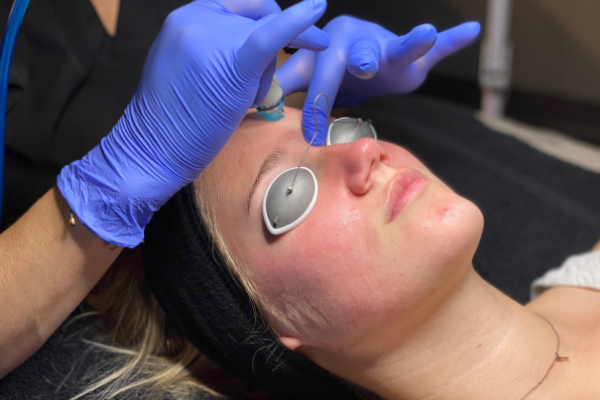
Thank you to Fargo dermatologist Dr. Rachel Ness and the Fargo Center for Dermatology for sponsoring this article and helping families find solutions to their skincare needs.
[/vc_column_text][/vc_column][/vc_row]
When my first daughter had some pimples and blackheads appear, I did what every good parent does. I bought the products I had heard of in advertisements.
And perhaps if my daughter would have had “easy acne,” these products would’ve worked.
But they didn’t work.
We wasted time and a lot of money. It was only after we began to see a dermatologist that she was able to find some relief.
After that, I vowed to take every child to a dermatologist when the first pimple or black head appeared. I have 3 teens and a tween, and they all routinely see their dermatologist just as they do their dentist. Oh, the relief to have someone else telling my kid to wash his face and with what product!
I felt like a weight was taken off my shoulders to have someone else directing each child in their specific, personal, skin care routine. And every time a kid in my house goes from a nose covered in black heads to a smooth, clear nose, I’m shocked and elated. Each child has had a different route to get to clear skin, and there’s no way I could’ve navigated that on my own.
Dr. Rachel Ness at Fargo Center for Dermatology is our family’s dermatologist in Fargo. As a mom to teens and tweens with acne, I wanted to share her insight on when and how to help parents and kids in their journey to treat their acne flare ups.
What is the difference between a few pimples and acne?
Everyone seems to use the terms “acne” and “pimples” interchangeably. However, there is a distinct difference between the two. Acne is a disease, while pimples are a symptom of this disease.
Acne is a condition that affects the hair follicles and oil glands in your skin. Each pore is connected to an oil gland by a canal called a follicle, and out of each follicle grows a hair that protrudes to the skin’s surface. The oil glands produce a substance called sebum. When sebum and dead skin cells clump together, they clog the follicle. The bacteria trapped in the follicle causes inflammation, which creates pimples.
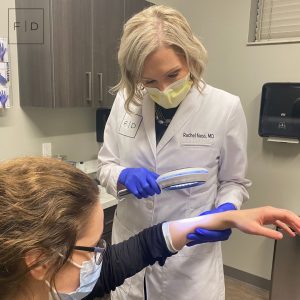
Isn’t acne something all teens go through? Does it need to be treated?
Most teenagers have some degree of acne. For some, it is so mild that they might not need any intervention. For the majority of teens, it often needs some kind of topical product. Often, you can start with easy, at-home treatments. You should see significant improvements within 2 months. If you are not seeing improvements in that time frame, your child might have the type of acne that does not respond to non-prescription treatment.
For most kids with mild acne, what over-the-counter products should they use?
Many kids do well starting with a gel, wash, or exfoliating pads containing benzoyl peroxide. (Don’t forget, this will bleach any fabric it comes in contact with. So give your kids some white towels!) Benzoyl peroxide products can irritate the skin, and need to be paired with a gentle cleanser and moisturizer best suited for the child. Cetaphil, Vanicream and Cerave are over-the-counter brands that make gentle cleansers and moisturizer.
Is there a way to prevent acne from happening?
In addition to treatment, there are also many self-care methods that can help prevent acne:
- Maintain a healthy diet (avoid skim milk and foods with a high glycemic index).
- Avoid picking at and squeezing existing pimples.
- Avoid touching your face (including with your phone or hair).
- Use non-comedogenic hair and skin products, available here.
- Wash your face with a gentle facial cleanser and warm water.
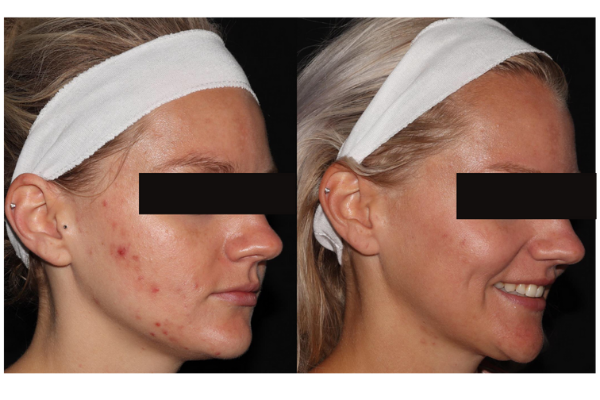
For families with a family history of acne, how can preventative care help slow the development of severe acne?
Acne is not difficult for dermatologists to treat. Acne scarring, however, is much harder to treat. Just like preventative care on anything (your car, your house, your teeth,) acne is often easier and cheaper to address early on instead of waiting until it has progressed to scarring acne.
Most of the time, dermatologists can get the acne under control in a few weeks to a couple of months. But acne scarring can take months to years to improve, depending on how severe the scarring is.
If you have a significant family history of acne, it is best to have your adolescents seen early to stay one step ahead of the acne getting out of control and to avoid scarring altogether. This makes for a happy teen and a happy parent!
When should families have their kids see a dermatologist?
It all depends on your genetics, hormones, other medical conditions, or medications. Some adolescents develop acne as young as ages 7 or 8. When you see acne, visit a dermatologist to get set on the right path. Sometimes, that first visit simply includes a dermatologist directing you to the correct skin care products, skin routine, and over the counter medications.
Every child and every acne case is different. So, it is important to address each type of acne differently to get the results quickly. This prevents your child from getting frustrated and giving up. When your child sees the results, he/she will be encouraged to keep up on their good, acne skin care.
If over-the-counter products don’t work, what’s next?
If some of the simpler, topical acne creams don’t work within 2 months, parents should schedule an appointment with a medical provider in a dermatology clinic. Perhaps the child needs more aggressive treatment such as prescription creams/gels/solutions or pills. There are so many amazing medications available that can cure most acne, and Fargo Dermatology offers an incredible line of acne treatment products!
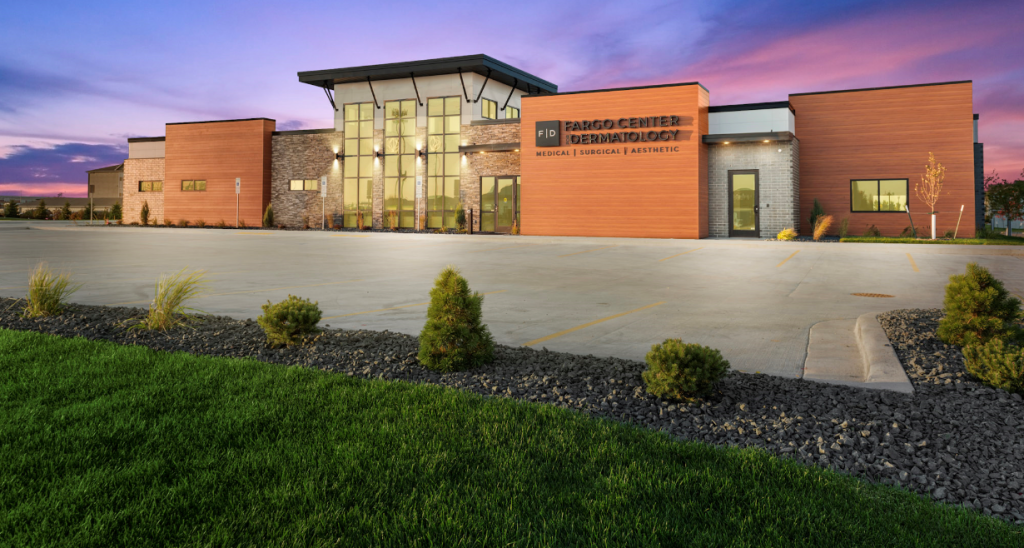
Parents and teens and their medical provider should come up with a plan that everyone is comfortable with. Some patients prefer to start with conservative treatments and other patients want to go right to more aggressive treatments. It is also good to bring in every product that your child has used in the past or are currently using to help guide the plan of care.
Are dermatology visits and products covered by insurance?
Yes. Just like other skin conditions, medical visits and most prescriptions are covered by your medical insurance. Deductibles, copays, and network restrictions may apply; contact your insurance provider for more details. Your flexible spending account contributions may also be used to purchase products in dermatology clinics.
About Dr. Rachel Ness
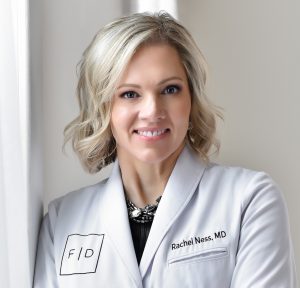 Dr. Ness is a local Fargo dermatologist and the owner and founder of Fargo Center for Dermatology. She has proudly provided care to her dermatology patients at the same practice since 2008. Dr. Ness is a board-certified dermatologist diplomat through the American Board of Dermatology and serves as a fellow for the American Academy of Dermatology. Dr. Ness graduated from the University of North Dakota and the UND School of Medicine and Health Sciences. Although she is a UND graduate, Dr. Ness and her family are active NDSU supporters and devoted Bison fans! Dr. Ness was born and raised in North Dakota and currently lives in Fargo with her husband and three very active boys.
Dr. Ness is a local Fargo dermatologist and the owner and founder of Fargo Center for Dermatology. She has proudly provided care to her dermatology patients at the same practice since 2008. Dr. Ness is a board-certified dermatologist diplomat through the American Board of Dermatology and serves as a fellow for the American Academy of Dermatology. Dr. Ness graduated from the University of North Dakota and the UND School of Medicine and Health Sciences. Although she is a UND graduate, Dr. Ness and her family are active NDSU supporters and devoted Bison fans! Dr. Ness was born and raised in North Dakota and currently lives in Fargo with her husband and three very active boys.
Dr. Ness specializes in medical, laser, cosmetic and surgical dermatology. She cares for the skin, hair, and nails and also provides care for skin cancers and biopsies and excisions of skin lesions and skin cancer. She provides treatment for spider leg veins, treatment for wrinkles with Botox, injections for facial rejuvenation and facial fillers. Dr. Ness is also trained in numerous laser procedures for hair removal, scars, vascular lesions, pigmented lesions, wrinkles and facial aesthetics, rejuvenation, and body contouring.
















